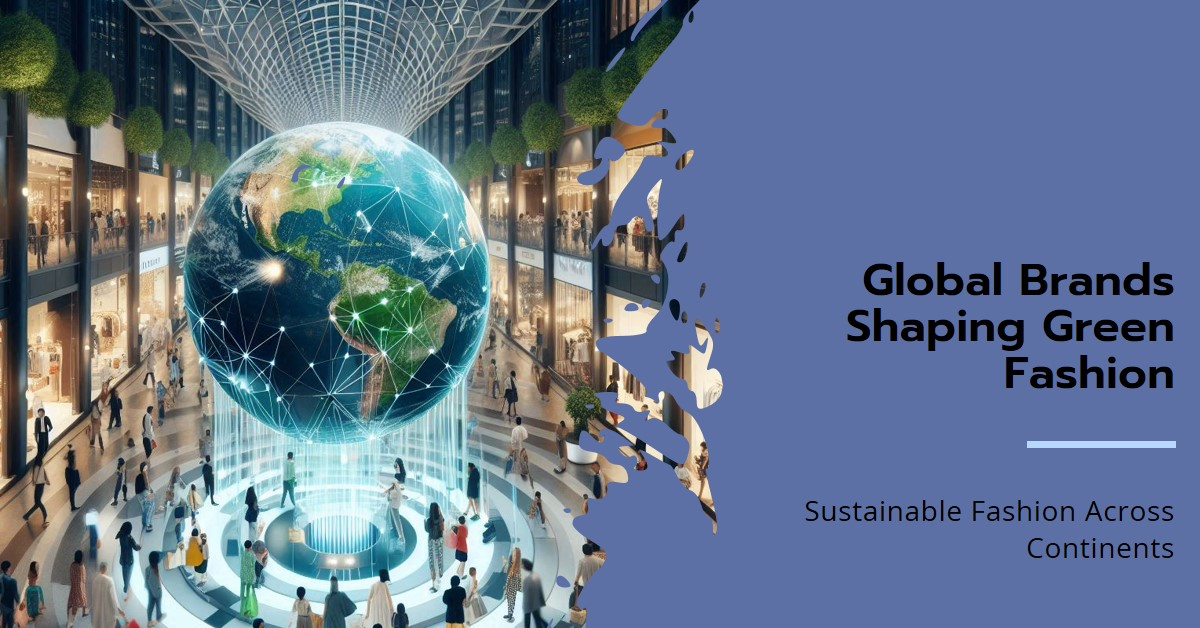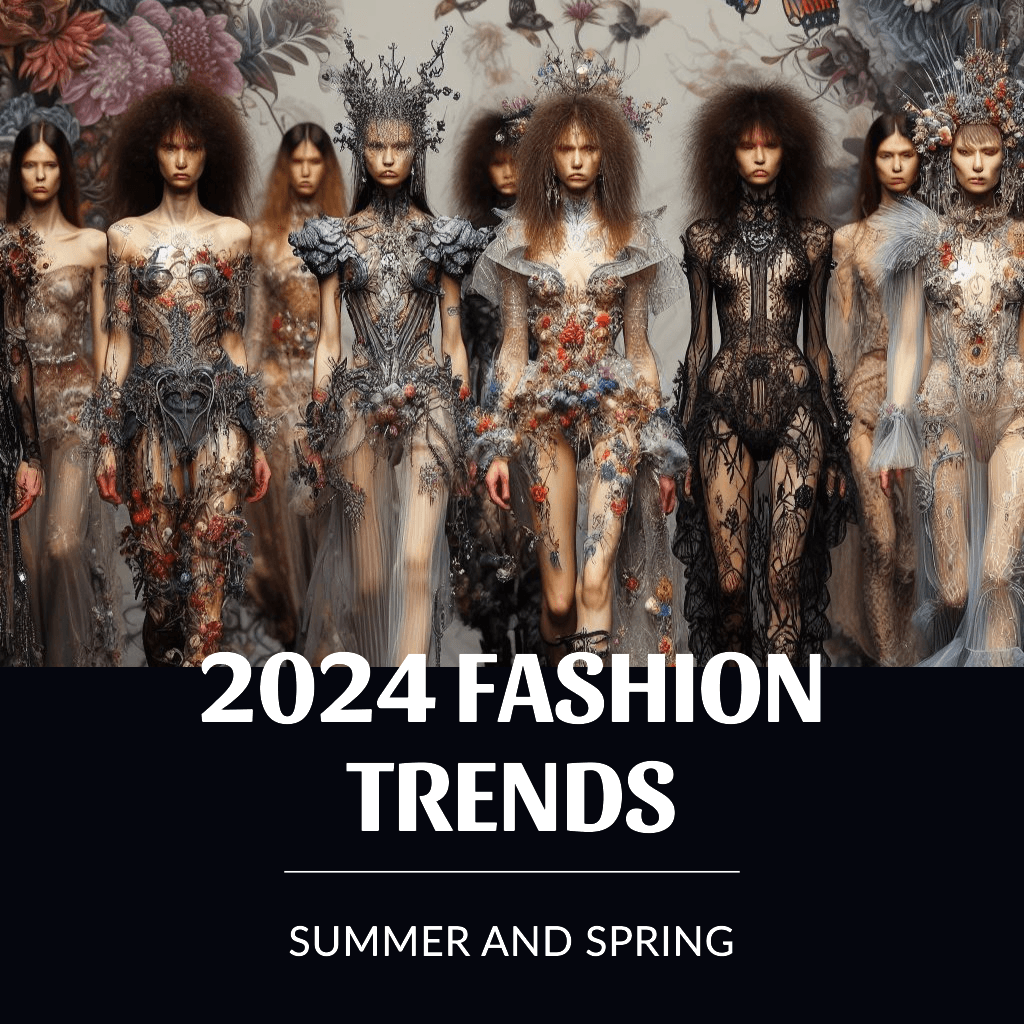The fashion industry, known for its creativity and innovation, is undergoing a significant transformation. As environmental concerns and ethical considerations take center stage, brands and consumers are increasingly embracing sustainable fashion. In Fashion Trends 2024, sustainability is no longer just a trend—it’s a necessity. With rising awareness of the impact of fast fashion on the planet, the demand for eco-friendly and ethical alternatives is skyrocketing.
This article explores the sustainable fashion trends shaping the industry in 2024, highlighting how brands are taking steps toward greener practices and how consumers are shifting their buying behaviors towards more conscious choices. We will also explore the future of sustainable fashion, its challenges, and how individuals can contribute to the movement.
The Shift Towards Sustainable Fashion
Sustainable fashion, also known as eco-fashion, emphasizes the use of environmentally friendly materials, ethical production processes, and long-lasting, high-quality garments. As consumers become more informed about the social and environmental impacts of the fashion industry, they are seeking brands that align with their values.
In 2024, the shift towards sustainable fashion is more pronounced than ever. Millennials and Gen Z, the largest segments of consumers, are at the forefront of this change, driving demand for transparency, ethical sourcing, and eco-conscious production. As a result, many fashion brands are rethinking their business models, adopting greener practices, and committing to reducing their carbon footprints.
Read More About the Rise of Eco-Friendly Fashion Brands
Sustainable Fashion Trends for 2024
1. Circular Fashion: Closing the Loop
One of the biggest trends in sustainable fashion for 2024 is the rise of circular fashion, which focuses on minimizing waste by keeping clothing in use for as long as possible. The goal of circular fashion is to close the loop on clothing production and consumption by designing garments that can be reused, repaired, or recycled at the end of their lifecycle.
Brands are increasingly using recycled materials and offering repair services to extend the life of their products. Some companies have also introduced take-back programs where consumers can return old garments to be repurposed or resold. This shift reduces waste and encourages a move away from the traditional linear model of “make, use, and dispose.”
Examples of Circular Fashion Brands:
- Patagonia: Known for its commitment to environmental conservation, Patagonia offers repair services and promotes secondhand sales through its Worn Wear program.
- H&M: The global fashion giant has introduced a Conscious Collection made from recycled materials and has launched a garment recycling initiative.
Explore How the Circular Economy is Changing Fashion
2. Upcycling and Repurposing Fashion
Upcycling, the process of transforming old or discarded materials into new products of higher quality, has become a major trend in 2024. This approach not only reduces waste but also promotes creativity and individuality in fashion. More and more designers are incorporating upcycled materials into their collections, creating unique, one-of-a-kind pieces.
The rise of DIY fashion and vintage shopping has also contributed to the upcycling movement, with consumers seeking to breathe new life into old garments. Upcycling aligns with the growing preference for sustainable consumption and highlights the potential for reducing fashion’s environmental impact.
Discover the Benefits of Upcycling in Fashion
3. Plant-Based and Biodegradable Fabrics
As consumers demand alternatives to synthetic materials like polyester, which is derived from petroleum and takes hundreds of years to decompose, fashion brands are turning to plant-based and biodegradable fabrics. In 2024, we see an increase in the use of fabrics made from natural sources such as hemp, organic cotton, bamboo, and Tencel, a material derived from wood pulp.
These fabrics not only reduce reliance on non-renewable resources but also break down naturally without releasing harmful toxins into the environment. Additionally, plant-based materials are often more comfortable, breathable, and durable, making them an attractive option for eco-conscious consumers.
Plant-Based Brands to Watch:
- Stella McCartney: A pioneer in sustainable fashion, Stella McCartney uses organic cotton, vegan leather, and plant-based alternatives in her collections.
- Pangaia: This eco-friendly brand uses seaweed fibers and bio-engineered materials to create sustainable fashion essentials.
Learn About Biodegradable Fabrics and Their Impact
4. Digital Fashion and Virtual Wardrobes
One of the more futuristic trends in sustainable fashion for 2024 is the emergence of digital fashion and virtual wardrobes. As the metaverse and virtual reality gain traction, digital fashion allows consumers to purchase virtual clothing for their online avatars. These garments exist solely in the digital world, eliminating the need for physical production, transportation, and disposal.
This innovation offers a sustainable solution to the demand for fast fashion, allowing consumers to experiment with styles without contributing to overproduction and waste. While still in its early stages, digital fashion has the potential to reshape the industry by reducing its environmental footprint.
Explore the Rise of Digital Fashion in the Metaverse
5. Slow Fashion: Quality Over Quantity
In contrast to fast fashion, which promotes constant consumption of low-cost, low-quality items, slow fashion encourages consumers to invest in fewer, higher-quality pieces that are made to last. Slow fashion focuses on ethical production, fair wages, and timeless design, aiming to reduce overconsumption and its environmental impact.
Many consumers are now prioritizing durability and versatility in their clothing choices, opting for garments that can be worn across multiple seasons. This shift in mindset reflects a growing awareness of the environmental consequences of fast fashion and the desire for more sustainable consumption patterns.
Learn More About the Benefits of Slow Fashion
The Role of Fashion Brands in Promoting Sustainability
Fashion brands play a crucial role in shaping the future of sustainable fashion. In 2024, many companies are making bold commitments to reduce their carbon emissions, eliminate waste, and promote ethical labor practices. From transparent supply chains to carbon-neutral operations, fashion brands are adopting various strategies to minimize their environmental impact.
Brands Leading the Sustainability Movement:
- Allbirds: Known for its use of sustainable materials like merino wool and sugarcane, Allbirds has committed to becoming carbon neutral by 2030.
- Reformation: This LA-based brand is known for its commitment to sustainable production and transparency, using eco-friendly materials and providing information on the environmental impact of each garment.
Read More About How Fashion Brands Are Reducing Their Carbon Footprint
The Consumer’s Role in Sustainable Fashion
While brands are essential in driving the sustainable fashion movement, consumers also play a critical role. Conscious consumerism is on the rise, with more people choosing to support brands that prioritize ethical and sustainable practices. Consumers can contribute to the movement by:
- Buying less, but better: Investing in high-quality, long-lasting garments.
- Supporting sustainable brands: Purchasing from companies that are transparent about their environmental and social impact.
- Shopping secondhand: Opting for vintage or pre-owned clothing reduces demand for new production.
- Caring for clothing: Extending the life of garments by repairing, upcycling, or recycling them.
Check Out Tips for Building a Sustainable Wardrobe
Challenges and the Future of Sustainable Fashion
Despite the growing popularity of sustainable fashion, the industry faces several challenges. Achieving complete transparency in the supply chain, ensuring ethical labor practices, and reducing the carbon footprint of clothing production are ongoing issues. Additionally, the cost of sustainable materials can be prohibitive for smaller brands and consumers.
However, as innovation in green technology continues, the future looks promising. Brands are experimenting with new materials, such as lab-grown leather and bio-fabricated textiles, which have the potential to revolutionize the industry. Government policies, such as the EU’s Green Deal, are also expected to push companies toward greener practices.
Discover Innovative Technologies in Sustainable Fashion
Conclusion
Sustainable fashion is more than just a trend in 2024; it’s the future of the fashion industry. From circular fashion to plant-based materials and digital wardrobes, the industry is taking significant steps towards reducing its environmental impact. Consumers are also playing a vital role by shifting toward conscious buying and supporting brands that align with their values. As the fashion world continues to evolve, the push for sustainability will shape the next generation of fashion, proving that style and sustainability can coexist.
Learn More About Sustainable Fashion Practices
By adopting eco-friendly choices, both brands and consumers can contribute to a greener, more sustainable future for fashion in 2024 and beyond.










